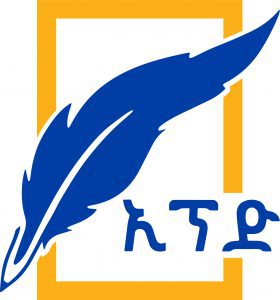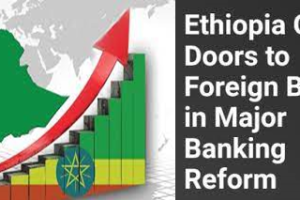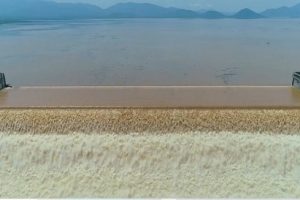
The Grand Ethiopian Renaissance Dam (GERD), born out of public advocacy is not a simple project that aims to generate electricity and foster Ethiopia’s energy capacity. It embraces numerous hard truths that speak out loud about Ethiopia’s project execution capacity. Aside from that, it is a project that ensures the nation’s sovereign right over the Nile River and other water bodies of its.
Since the inception of the mega project on April 2, 2011, it was projected to with an initial estimated cost of $4.7 billion. Many external observers doubted the feasibility of the plan by considering it a paper tiger. Their primary reason was this doubt resulted from the fact that Ethiopia is a poor country and has no financial muscle to finance the project. Moreover, they also have a doubt to the country’s technical capacity.
The GERD project, initiated with a strong sense of government commitment and public mobilization, has faced delays and challenges that have not been openly disclosed to the public. Despite this fact the public mobilization has continued its momentum with a vision of taming the flow of the Abbay River roaring past its perimeter without giving benefits to the country of origin, but eroding the valuable alluvial red soil to neighboring countries.
Conversely, activities that contribute to the delays in the GERD receive considerable support from external parties who wanted to prove Ethiopia`s incapability to the whole world and demoralize the public at large. Moreover, weak project management together with allocating certain tasks to local entities have resulted in unnecessary sacrifices for the country and its development goals regarding the dam.
The GERD project has faced delays and stagnation due to political disputes and disagreements in areas of dam’s filling and operation. Key issues include the water flow, drought management, as well as concerns about dam safety and its impact on downstream countries.
Amidst political turmoil, the country has been in a state of uncertainty. The ongoing political activism of the youth culminated in the resignation of EPRDF-led government and replaced by the reformist Prosperity Party. To help facilitate the country’s recovery from a cycle of challenges, Prime Minister Abiy Ahmed (PhD) led a group of “political surgeons” with the capacity of identifying the root causes of the problems of major projects so as to give timely solution to the cause. Using strategies and reform measures, Prime Minister Abiy and his team took an action to complete projects with effective project management skills.
It is essential to recognize that economic reforms do not offer immediate solutions to longstanding challenges. Prior to launching the new economic reform program, the Ethiopian government was acutely aware that it could not miraculously revive its bankrupt economy.
Several factors contributed to this predicament, including political instability fueled by public grievances and significant economic strain.
When the newly appointed Abiy Ahmed government took office, the country faced severe financial difficulties, rendering it unable to meet even the monthly salary payments for government employees. This context highlights the complexity of the economic landscape and the formidable task the government faces in pursuing meaningful reform.
At that time, implementing a new economic approach alone was not seen as a pertinent solution for the visionary government that was performing various miracles in its daily activities.
In order to make the issue participatory, it was discussed with various stakeholders, leading to the development of a Homegrown Economic Reform. A Homegrown Economic Reform Agenda is a comprehensive plan with primary objectives: ensuring macroeconomic stability to sustain rapid economic growth, rebalancing the roles of the public and private sectors in the economy, and unlocking new growth potentials.
Following the launch of the new economic reform, Prime Minister Abiy’s Government made economic decisions and took measures on various mega projects that were previously sluggish due to poor management.
Projects like the Grand Renaissance Dam (GERD) were underperforming and draining the country’s resources, requiring wise decisions from the government. The new government critically analyzed the issues and explored various options for improvement.
Thanks to the reform, significant progress has been observed in projects like the GERD, showcasing the positive impact of ongoing economic reforms. Once completed, the GERD will generate foreign currency for the country by exporting electric power to neighboring countries, strengthening cooperation and partnerships, apart from responding to the high-level electric power demand of manufacturing industries.
Another important point to mention is that the project has been carried out despite numerous objections from both local and international bodies against the construction of the dam. The reformist government has been actively seeking peaceful resolutions to conflicts, including internal wars instigated by foreign countries. By engaging in round table discussions, the current government has successfully resolved these conflicts.
In areas of diplomacy, the country has also strengthened its diplomatic relations with various countries focusing on peace and progress. The country has effectively defended itself against false accusations and inquiries tabled to the United Nations Security Council and the African Union by downstream countries. Skilled diplomats have conveyed a message to the whole world that the dam will not cause any significant harm to these countries.
Despite the ongoing pressure from downstream countries during the first, second, third, and final filling of the GERD dam, the Ethiopian government has chosen to proceed with the construction. Ignoring criticisms and pressures, the government has continued with the project, receiving support from its people and other partners.
After successfully identifying critical problems and implementing effective solutions, the GERD Dam has now become a project that can contribute to the country’s foreign currency income. Like a child who safely emerged from his mother’s womb almost seven years ago, it is now able to stand on its own feet and speak for itself. When it completes the puberty period, it may contribute to the birth of a sibling, and the dam may continue to duplicate and evolve itself.
The surgeon has fulfilled all of his dreams, and now the mother of the child may be dreaming of having another child. As of March 30, 2025, the Grand Ethiopian Renaissance Dam (GERD) is operational, with the reservoir filled and electricity being generated. However, a binding agreement with downstream nations Egypt and Sudan regarding its filling and operation remains elusive.
The project that many outsiders once dreamed of barricading is now becoming a reality. Prime Minister Abiy Ahmed’s government is recognizing the historic significance of this project and is actively involved in ensuring its success.
BY GIRMACHEW GASHAW
THE ETHIOPIAN HERALD WEDNESDAY 2 APRIL 2025





